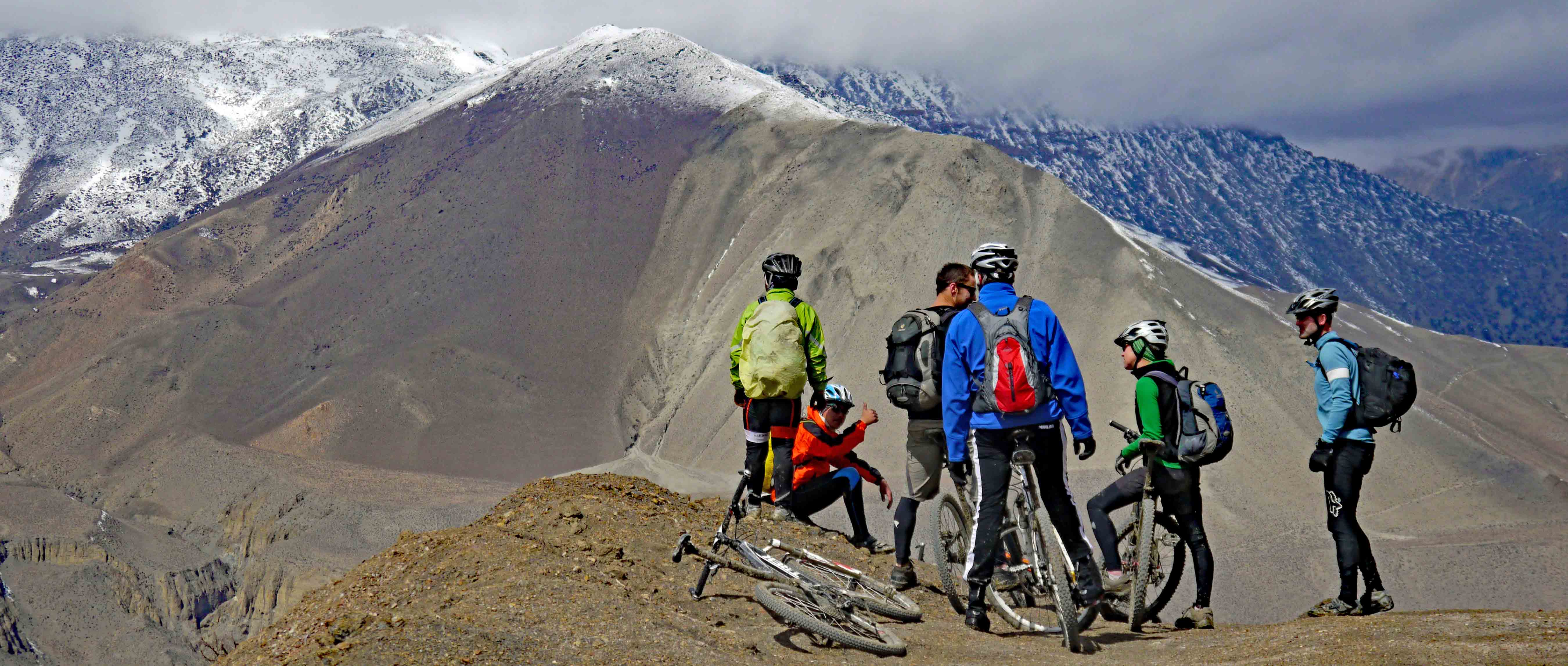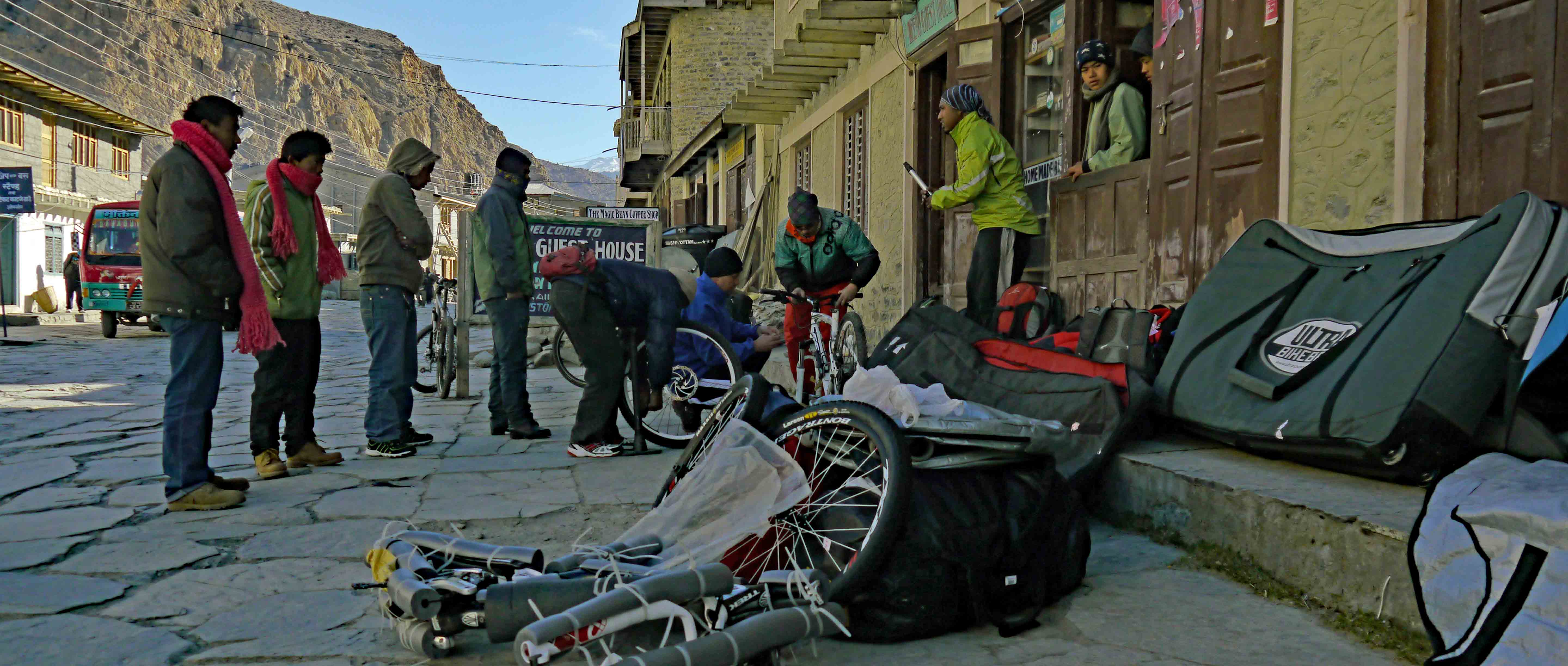Can you imagine traversing the whole of the most mountainous country on earth by gravel bike? If you sign up for the newly launched TransNepal gravel event, that is what you will be undertaking. Starting at an altitude of 4600m and finishing at just 100m altitude, riders will cover 400 km during the six stages of riding. Mind-blowing scenery, fantastic gravel trails and an incredibly warm welcome are just some of the highlights being offered.
Just getting to the start line for the 2025 TransNepal gravel event will be quite an adventure. Hope you’re sitting down when you read this – it will take four days of travelling from the Nepali capital Kathmandu just to reach the start line!! Some of you will read that and think, thanks, but I’m out. But for anyone still reading, congratulations, you’ve passed the first stage of the enrolment process for the event!
Nepal is home to the world’s highest mountains but laced in between and around these mountains is some of the greatest gravel riding you could ever wish for. The problem is that the very best riding is a hell of a long way from anywhere. Travelling from Kathmandu to the start line close to the Chinese border requires a coach journey, a spectacular 30-minute mountain flight and two days of driving in a 4x4. While that might not sound all that appealing, the payoff is that the scenery will blow your mind. Everywhere you look will be mountains so vast you think they must be a Hollywood filmset backdrop, ancient villages perched on the edge of vast river valleys, seemingly endless lines of sun-faded prayer flags and in the higher parts of the route, yak trains which look like something out of a National Geographic documentary.
The biggest “draw” for the trip for many people will be the chance to ride in the mythical land of Upper Mustang. Until 1950, this area was a separate kingdom within the boundaries of Nepal and before 1994 it was not possible to visit as a non-Nepali citizen. Even now, entry is restricted (and a fee of US$500 is charged per visitor), so you’re not going to find overcrowded trails or queues of tourists at viewpoints. The organisers describe this part of the event as “pure unadulterated wilderness gravel.” Brace yourself for some exertion though – the event starts at 4600m above sea level – not much lower than the summit of Mont Blanc.

From the high point of the route, riders will eventually end up at just 100m above sea level. To get between the two points requires 400 km of “gravel and back country roads” and there’s a pretty impressive 15,500m of descending involved. There’s also 12,000m of ascent built into the route, much is which is backloaded into the latter stages of the event, so bring your climbing legs. Along the way, the participants will be looked after by a professional team, including medics, a bike mechanic and a fleet of support drivers/vehicles. The team organising the event have run the Yak Attack MTB race in Nepal for the past 17 years and have recently branched out into running gravel events in Sri Lanka too, so they have all the experience and skills that will be needed for safely shepherding the group from start to finish.

The group size is going to be limited to just 30 people. This is based on the limited accommodation options to be found in the Upper Mustang region and for this reason, there will be an application process to go through to be accepted for the event. The organisers are not sugar-coating the fact that the event is pretty tough – lots of the route is high altitude and remote and although the stage lengths don’t appear that great, the cumulative effect of altitude and the volume of climbing/descending mean it’s really only suitable for riders who are experienced and well-trained.

The route is designed as a gravel route, not an MTB route, so the riding will mainly be on vehicle-width trails. The organisers recommend gravel bikes with tyres of greater than 40mm width and in our own experience of riding in Nepal, we would recommend ensuring your tyres are set up tubeless and you have as big a range of gears as possible. We suspect some of the participants will bring hardtail or even short-travel full-suspension XC MTBs although balancing the comfort-versus-extra-weight-on-the-climbs equation will be a hard one to get right!

For anyone who has ever been trekking in Nepal, the omnipresent teahouse will be well known to you and these will also form the basis of the accommodation in the upper sections of the event. The teahouses used during the event are described as being “generally basic, but comfortable and clean.” Riders will be sharing twin or triple rooms. During the upper sections of the event, water is pretty scarce, so hot showers (or even showers at all) might be a little scarce, but as the route descends the level of comfort increases and the event finishes at a “boutique style hotel in Lumbini, the birthplace of Buddha”.
You can find all the additional details about the event, including an incredibly informative FAQ section on the event website and they also have a great blog too, which gives some behind-the-scenes insight into the event and the team behind it.